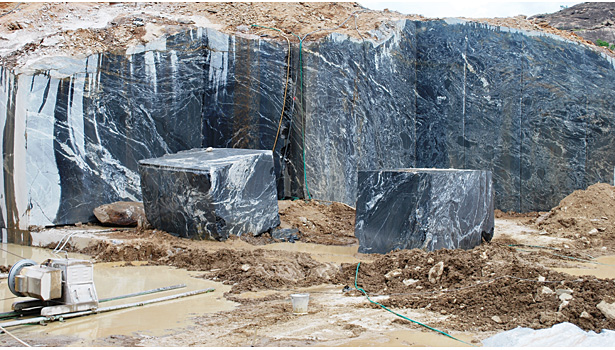A Journey Via Granite Quarries in South Africa: Unveiling Nature's Virtuosity
A Journey Via Granite Quarries in South Africa: Unveiling Nature's Virtuosity
Blog Article
Revealing the Mysteries of Granite Quarrying: Where Stamina and Elegance Meet
The globe of granite quarrying is a realm where the raw strength of nature assembles with human creativity to develop structures that stand the test of time with an air of sophistication. From the midsts of quarries to the careful sprucing up in workshops, the process of transforming granite into building wonders is a complicated dancing of practice and technology. As we peer into the midsts of this old craft, we begin to reveal the hidden details that form the really significance of our built environment.
The Origins of Granite Quarrying
In the annals of architectural background, the beginnings of granite quarrying are shrouded in a tapestry of old craftsmanship and geological wonders. Going back to ancient Egypt and Mesopotamia, the extraction of granite from quarries noted the start of a trip that would at some point cause the development of a few of the globe's most iconic frameworks.
Granite quarrying's roots can be traced to the experienced craftsmens who identified the stone's resilience and aesthetic charm. Via a combination of primitive tools and large resolution, these very early quarry employees discovered granite blocks that would come to be the structure blocks of human beings.
As worlds progressed, so did the methods of quarrying granite. The Romans, renowned for their engineering prowess, developed sophisticated methods for drawing out granite to construct monuments, temples, and roadways that stood the examination of time.
The heritage of these ancient quarrying methods remains to shape modern style, with granite continuing to be an icon of toughness and sophistication in building projects around the world. (granite quarries in south africa)
Tools of the Quarrying Trade
The advancement of granite quarrying techniques from old human beings to contemporary times highlights the critical role played by the tools of the quarrying sell shaping the market's practices. In ancient times, quarrying tools were rudimentary, frequently being composed of knives, hammers, and wedges made from products like bronze or iron. These tools needed significant workforce and time to essence granite obstructs from quarries.

Furthermore, the intro of pneumatic devices and high-powered equipment has actually dramatically decreased the physical labor called for in quarrying procedures, enhancing employee safety and security and efficiency. As the quarrying market remains to innovate, the devices of the profession stay at the forefront of driving progression and forming the future of granite extraction.
Drawing Out Blocks of Granite
Using precision machinery and advanced methods, the extraction of granite obstructs from quarries has actually ended up being a sophisticated process in the modern quarrying market. Regulated blowing up techniques are after that utilized to break apart the granite into manageable sections.

Polishing and Finishing Strategies
To accomplish a flawless surface area on granite blocks, proficient pop over to these guys artisans use a collection of meticulous sprucing up and completing techniques. After the first extraction and forming processes, the granite blocks go through a complete polishing stage to improve their natural beauty and durability. One usual technique made use of in polishing granite is ruby abrasion, where industrial diamonds are utilized to grind and polish the rock to a smooth finish. This procedure not only produces a lustrous surface area but likewise guarantees harmony in color and appearance across the granite block.
In addition to polishing, completing techniques are related to further fine-tune the granite's look. These strategies might include flaming, developing, or brushing, each offering distinct structures and surfaces to suit different visual preferences. Flaming, for example, involves revealing the granite surface area to high temperatures to produce a rough, distinctive coating, ideal for outdoor applications where slip-resistance is vital. Honing, on the other hand, supplies a matte finish that is smooth to the touch, ideal for indoor kitchen counters and flooring. By very carefully choosing and applying these polishing and completing techniques, craftsmens can change raw granite blocks right into charming items that showcase both strength and elegance.

Ecological Impact and Sustainability
With the growing focus on ecological awareness in the industry, granite quarrying practices are progressively inspected for their influence on all-natural resources and long-term sustainability. Furthermore, the visite site transport of granite from quarries to refining centers creates carbon exhausts, further contributing to environmental deterioration.
To alleviate these effects and make certain sustainability in granite quarrying, sector stakeholders are taking on numerous measures. Executing sophisticated innovations to decrease energy usage and water usage, recovering quarried land for environmental repair, and promoting accountable sourcing methods are some techniques being utilized. Qualifications such as the Woodland Stewardship Council (FSC) and the Management in Energy and Environmental Design (LEED) help customers recognize eco friendly granite products.
Conclusion
Finally, granite quarrying is a process that calls for specialized devices and methods to extract blocks of granite and brighten them to pop over to these guys a high level of coating. While the environmental influence of quarrying can be considerable, efforts are being made to enhance sustainability practices in the sector. Generally, granite quarrying is a fragile balance in between using the stamina and elegance of this all-natural rock while lessening its effect on the atmosphere.
Report this page